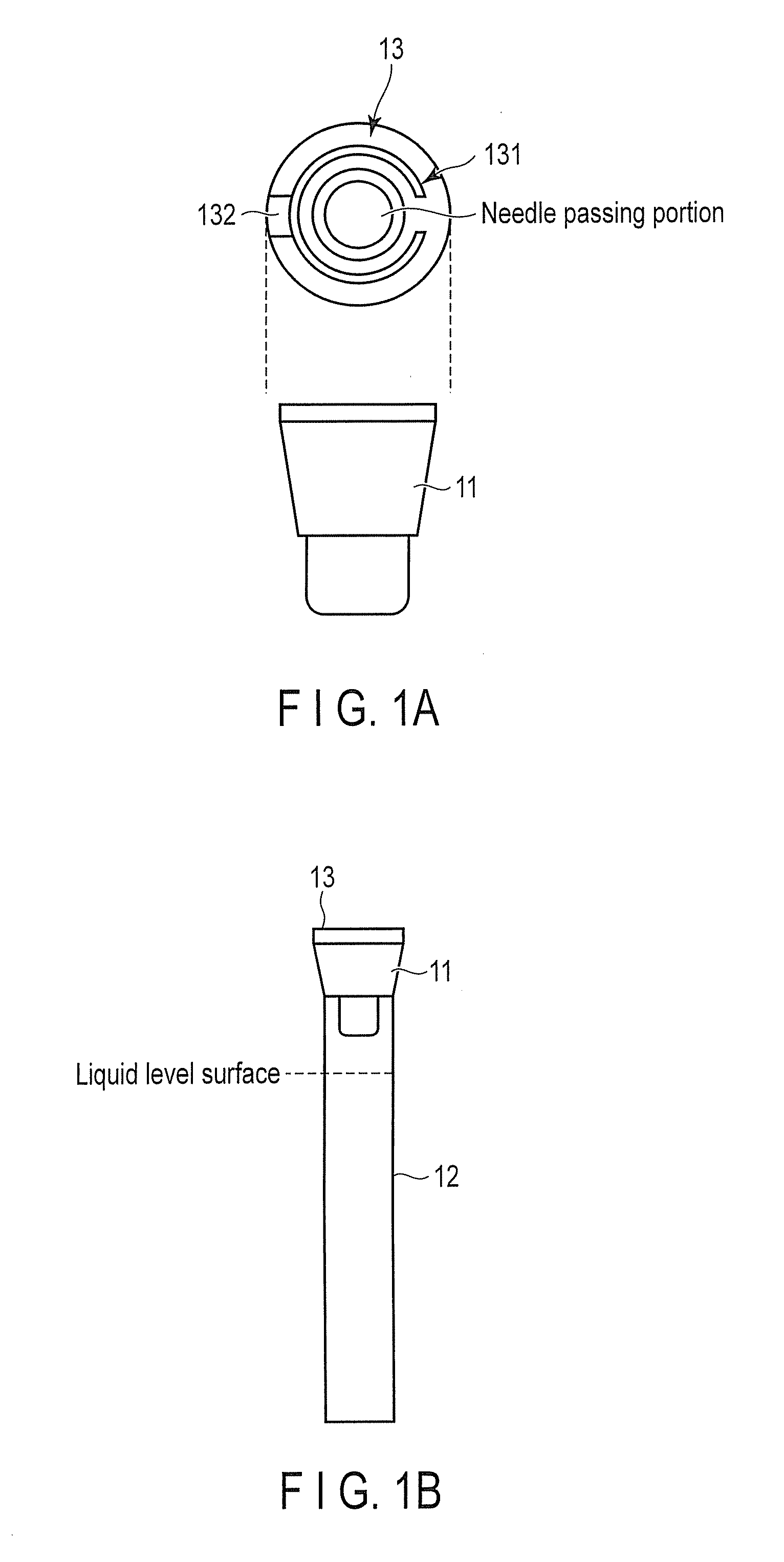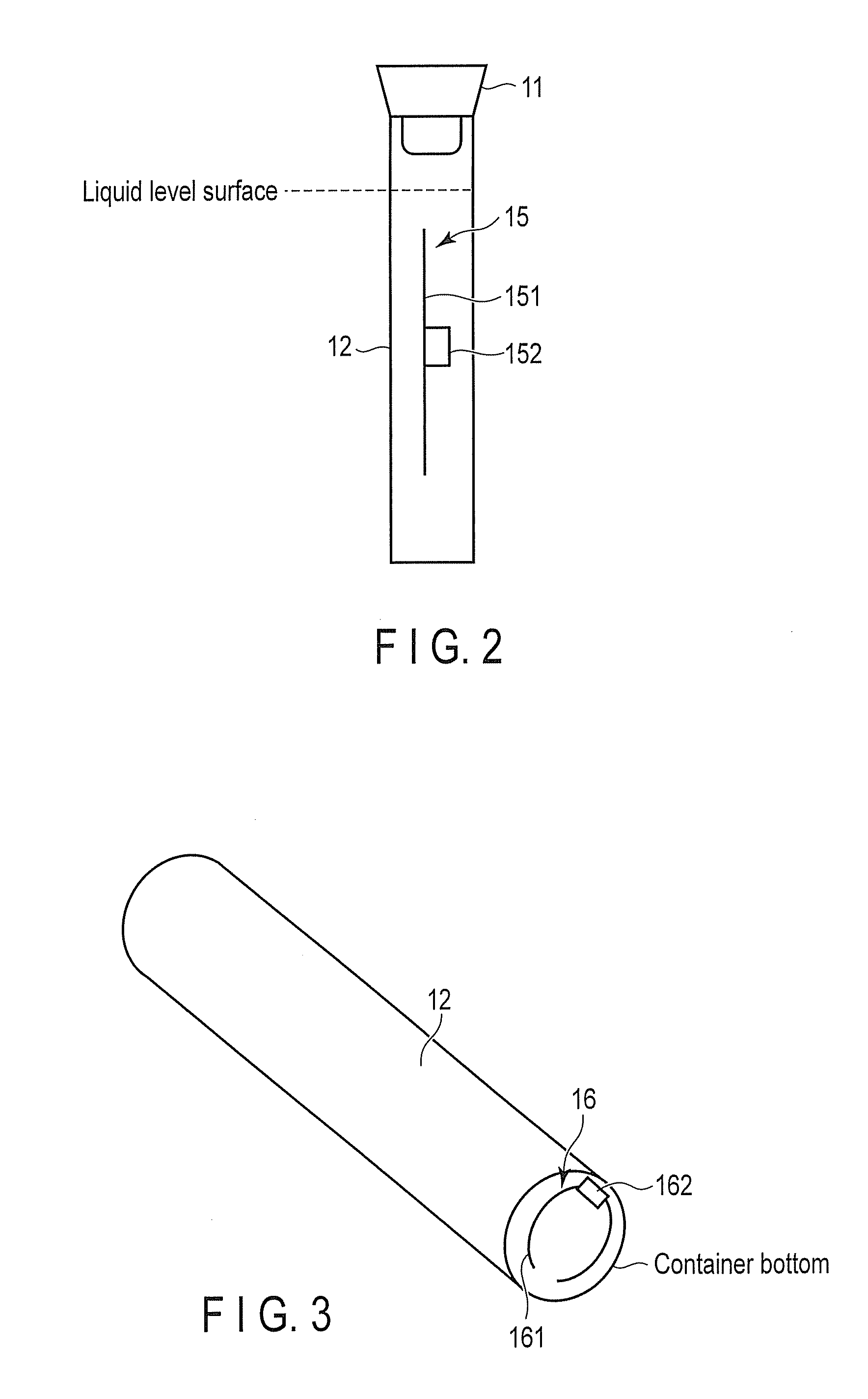Wireless tag collective reading device, and network article management system
a technology of collective reading and network articles, applied in the field of wireless tagequipped articles, can solve the problems of high degree of reliability, suggested any specific method to ascertain the actual number, and difficulty in conventional techniques to collectively read these articles, so as to improve the accuracy of reading information and reduce costs
- Summary
- Abstract
- Description
- Claims
- Application Information
AI Technical Summary
Benefits of technology
Problems solved by technology
Method used
Image
Examples
Embodiment Construction
[0129]Hereinafter, an embodiment according to the present invention will be described in detail with reference to the drawings.
[0130]FIG. 1A shows a top view and a side view of an example of how a wireless tag is printed on a container cap 11 according to the present invention. FIG. 1B is side view showing how the container cap 11 is attached to a container body 12. When the present invention is used for a vacuum blood collection tube that is used in, for example, a blood test, a horseshoe-shaped loop antenna 131 and a wireless tag chip 132 connected to the antenna 131 are circumferentially printed on the upper surface of the container cap 11, and a wireless tag 13 is thereby formed on the upper surface of the container cap 11. This allows a through-hole for a blood collection needle to be made in the container cap 11 even when the wireless tag is printed and formed on the upper surface of the container cap 11.
[0131]FIG. 2 shows an example of how a wireless tag 15 that comprises an ...
PUM
 Login to View More
Login to View More Abstract
Description
Claims
Application Information
 Login to View More
Login to View More - R&D
- Intellectual Property
- Life Sciences
- Materials
- Tech Scout
- Unparalleled Data Quality
- Higher Quality Content
- 60% Fewer Hallucinations
Browse by: Latest US Patents, China's latest patents, Technical Efficacy Thesaurus, Application Domain, Technology Topic, Popular Technical Reports.
© 2025 PatSnap. All rights reserved.Legal|Privacy policy|Modern Slavery Act Transparency Statement|Sitemap|About US| Contact US: help@patsnap.com



